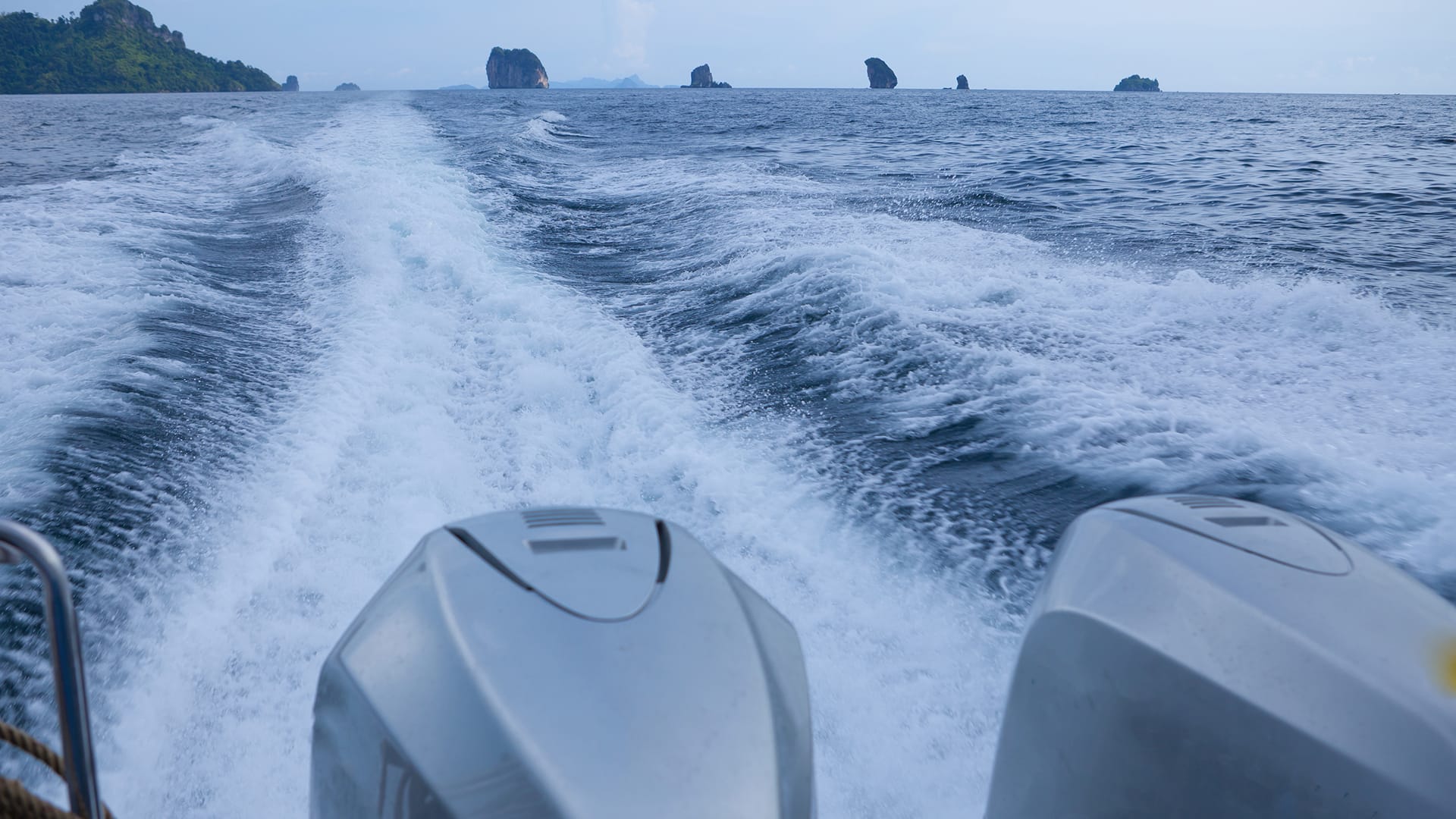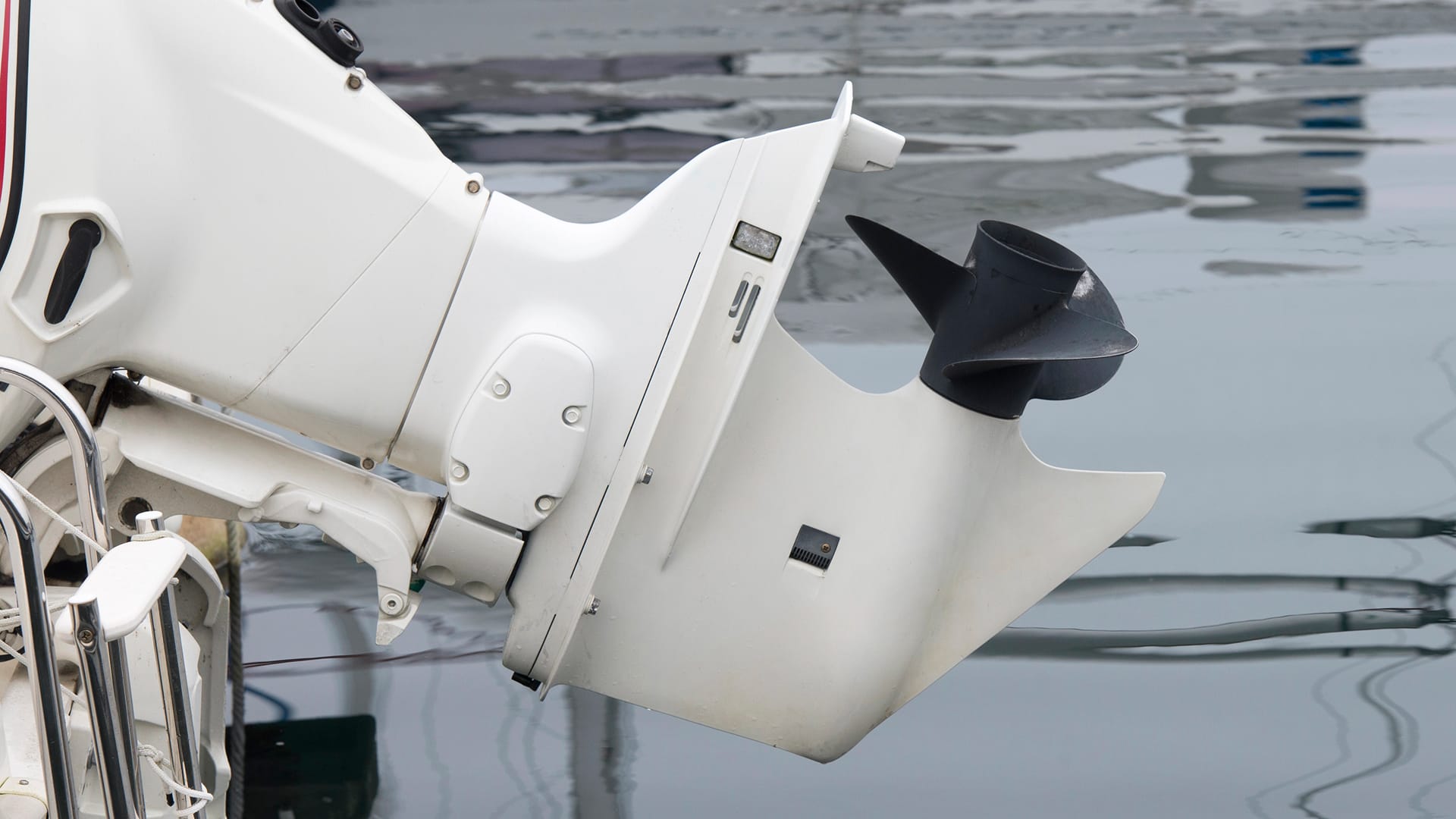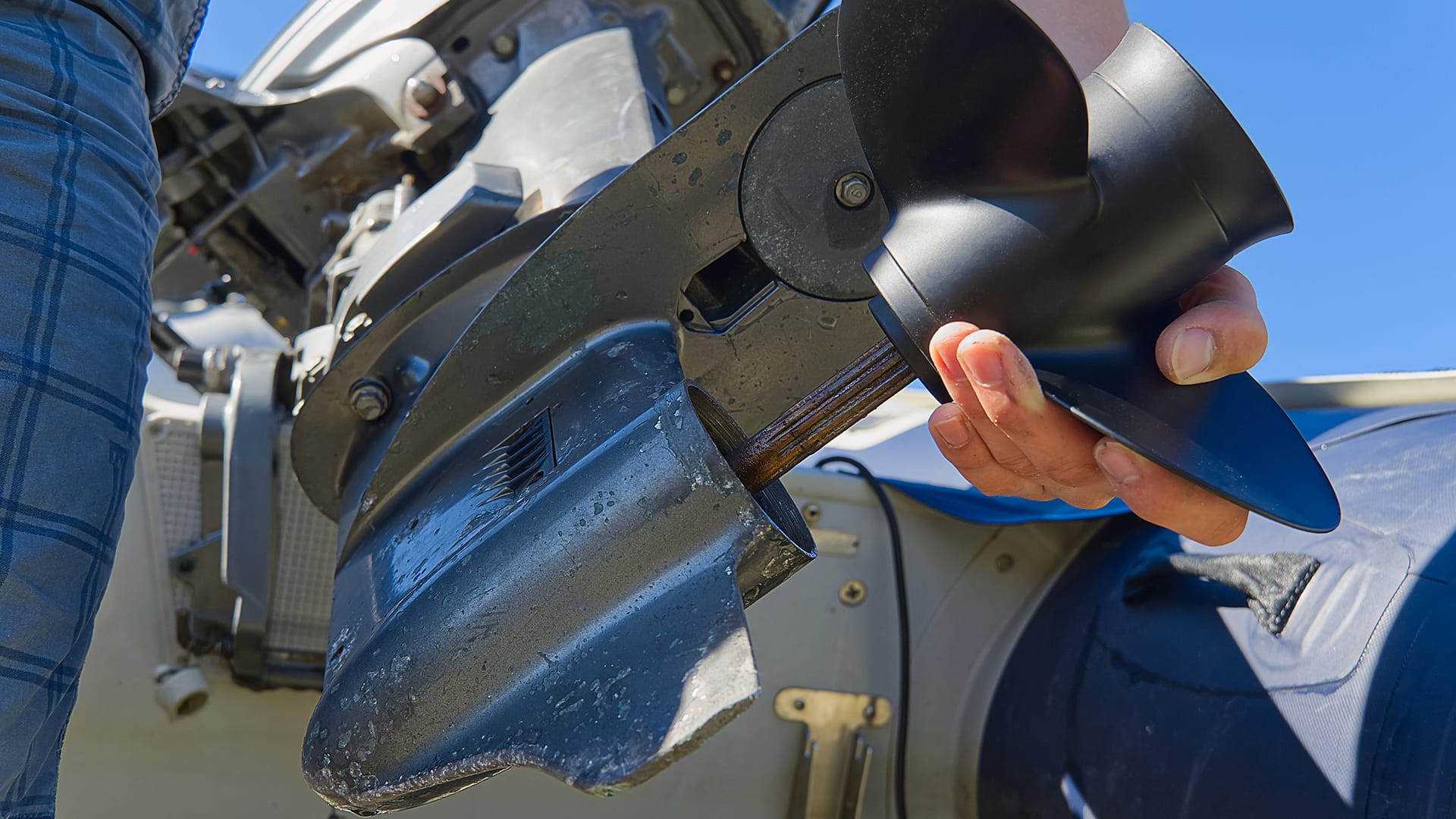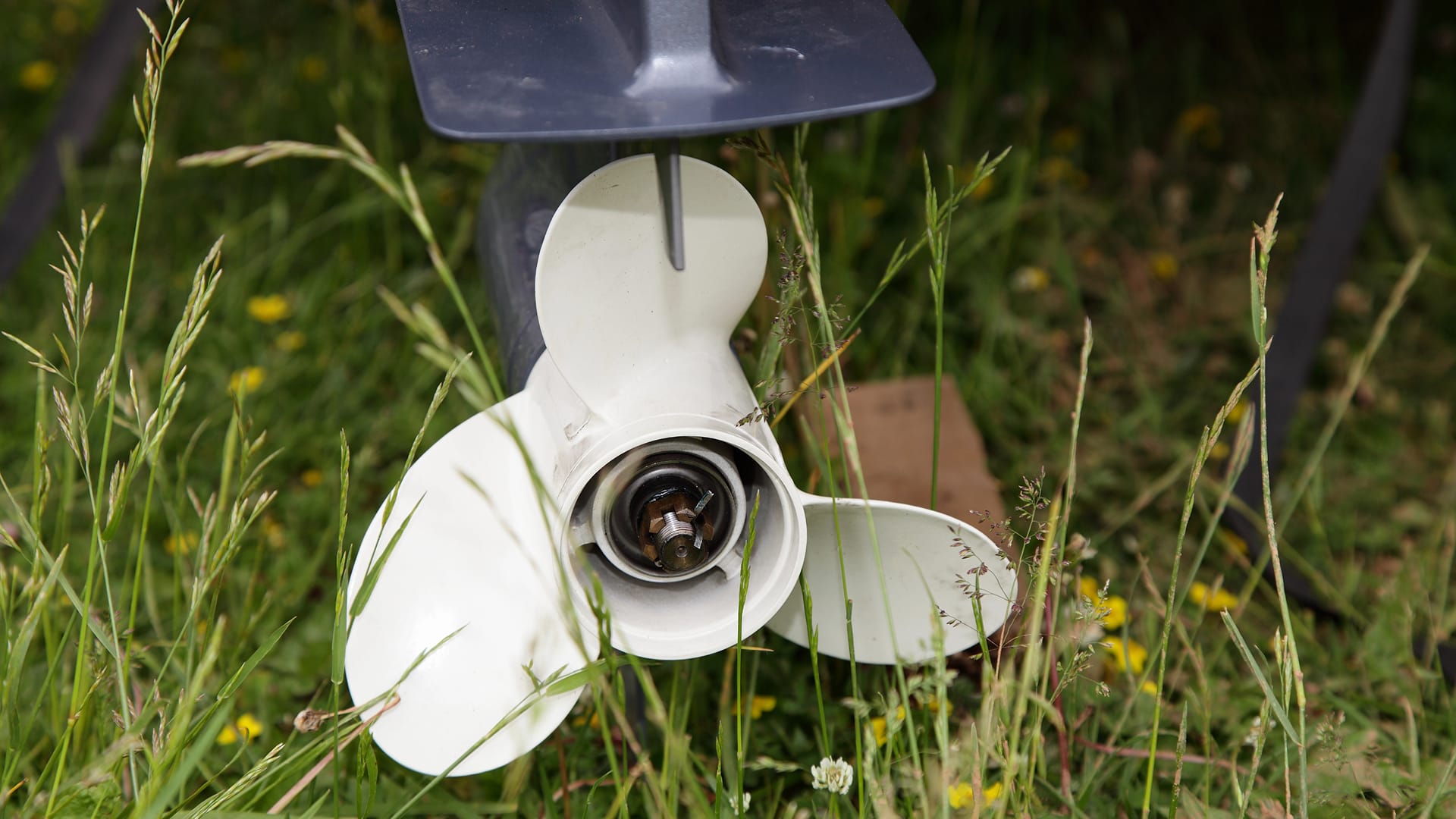Getting the correct propeller for your boat can make a world of difference. Why? It affects fuel use, boat speed, and how effortless your boat ride feels. But many boat owners guess and end up with the wrong prop. This can lead to higher fuel burn, slower speed, or even trouble reaching wide open throttle. Today, let’s break down how to size a boat prop in plain language. 
Propeller Pitch – The Heart of the Sizing Process
When you hear the term “propeller pitch”, think of it like a screw. Prop pitch is the distance the propeller would move forward in one revolution through a solid material. Of course, water isn’t solid, so it’s more of an estimate. A lower pitch moves less distance/spin. That means the engine revs higher, which is great for getting on a plane fast. But it can limit top speed. A higher pitch moves further per spin. It can give better fuel economy, but it may bog down the engine of the boat if it’s too high. Choosing the right prop pitch keeps your boat engine in its operating range at wide open throttle. Go too far off, and you’ll see sluggish performance or poor fuel economy.
Propeller Diameter Size Makes a Difference
The propeller diameter is the distance across the circle made by the propeller blades as they are spinning. A bigger diameter moves more water, which is best for heavy boats or slower cruising. A smaller diameter spins faster for higher speeds but moves less water each turn. Changing the diameter also affects the speed of your boat and how your boat’s motor performs at different loads. It’s linked closely to propeller pitch. If you change one, you may need to adjust the other. 
Propeller Shaft & Fit
No matter how perfect your propeller diameter or propeller pitch is, it’s useless if it doesn’t fit your propeller shaft. Propellers mount in a specific way, and mismatching can cause damage, vibration, or dangerous failure. Before buying a boat prop, check your spline count and hub type. The right connection means your power transfers smoothly without stress on the motor.
Propeller Blades & Shape
The number and shape of propeller blades matter a lot. Most boats have 3 or 4 blades. 3 blades usually mean higher top speed. 4 blades often give smoother handling, better grip, and improved fuel economy when you are cruising on your boat. The curve of the trailing edge and the angle of the blade tips change how water flows. Some props have a cupped propeller design. This small curve at the edge helps with bite in the water and reduces slip. It can also add a bit of speed. 
Reading Your Engine Data
Before you can size a propeller, you need your engine data. This means knowing the gear ratio, horsepower, and recommended operating range. The gear ratio tells you how many times the boat prop spins for each crankshaft turn. If you change props without considering gear ratio, you might overload the boat’s engine or cause it to rev too high. Also, check your current WOT RPM (Wide Open Throttle). If your RPM is below the recommended range, you may need a lower pitch. And if it’s above, you might need a higher pitch.
Signs You Have the Wrong Prop
The wrong prop can show itself in different ways:
- You burn more fuel and lose fuel economy.
- Your boat struggles to reach wide open throttle WOT.
- You get a slower speed than expected at the same RPM.
- The boat feels sluggish getting on plane.
- You hear the boat engine strain or race too high.
If you see these signs, it’s time to think about how to size a boat prop again.
Same Pitch, Different Feel
Remember that two props with the same pitch can perform differently. Changes in cupped propeller edges, or trailing edge design, or blade tips all affect grip and water flow. That’s why testing is the real deal. What works on one hull may not work on another. Small tweaks can mean a noticeable change in fuel economy and in boat speed.
Balancing Top Speed & Better Fuel Economy
Some boat owners chase top speed. Others want better fuel economy. The perfect correct propeller balances both. A higher pitch might give you that extra mph when you are on cruise. But if your boat can’t spin it to the right RPM at wide open throttle, you’ll lose out on acceleration and strain the engine of your boat. A lower pitch may drop your top number, but it can improve take-off and make the boat feel livelier. 
The Role of the Trailing Edge & Blade Tips
The trailing edge is the back of the blade. How it’s shaped affects how water leaves the propeller. A sharper edge can reduce drag, while a rounded one can be smoother. The blade tips are the outer ends. Small changes here generally stop ventilation or help keep grip in turns. This is where designs like the cupped propeller shine, especially at higher loads or in rougher water.
When to Try a Cupped Propeller
A “cupped propeller” adds a tiny curve at the edge of the blades. This creates more bite in the water. It can also raise RPM slightly. It often helps boats that slip too much in turns or in choppy water. For some setups, cupping lets you run a slightly higher pitch without dropping RPM too much. This can also improve fuel economy at cruise.
Don’t Ignore Wide Open Throttle WOT
Testing at wide open throttle WOT is one of the best ways to see if you have the correct propeller for your boat. Run your boat with your usual load and see where your RPM falls. If it’s below the recommended operating range, try a lower pitch. If it’s above, try a higher pitch. This keeps the motor of the boat happy and avoids power loss.
Why the Same Pitch Might Not Work for Everyone
Even with the same pitch, props differ. A more aggressive blade tip, a different number of propeller blades, or a unique trailing edge can change fuel burn, acceleration, and grip. That’s why boat owners often test 2 or 3 props before settling on one. The goal isn’t just hitting top speed—it’s getting effortless power delivery and better fuel economy.
Matching Prop to Operating Range
Every boat engine has a sweet spot. This is its operating range: the RPM zone where it runs strongest and cleanest. Sizing a propeller so your boat hits that range at wide open throttle means you get the best mix of fuel economy and boat speed. Miss it, and you’ll see more fuel burn or sluggish movement. 
The Impact of One Revolution
Think back to one revolution of your prop. That’s where propeller pitch comes into real play. If the pitch is too high, the boat engine strains to push through the water in that spin. If it’s too low, it spins easily but wastes power on extra turns. This is the reason why balancing propeller pitch, propeller diameter, and your gear ratio is super important.
Final Thoughts on How to Size a Boat Prop
Knowing how to size a boat prop isn’t about guessing. It’s about matching propeller diameter, propeller pitch, and propeller blades to your engine data and operating range. The correct propeller will give you strong top speed, perfect acceleration, and better fuel economy. It will fit your propeller shaft flawlessly and work with your gear ratio to keep your motor happy at wide open throttle. Don’t stick with the wrong prop just because it came with your boat. Test, adjust, and watch your boat speed and boat ride improve.
Where to Get the Correct Propeller in Tennessee
If you’re in Tennessee and need help with how to size a boat prop, Prop Depot is a great place to start. We are authorized dealers for Mercury, ACME, OJ, Powertech, and Solas propellers. We also carry Volvo Penta, Michigan Wheel Cruiser Propellers, and Quicksilver Propellers. You’ll find everything from new propellers to cruiser propellers, pod drive propellers, outboard & sterndrive propellers, and aluminum props. Prop Depot even has demo & used propellers, plus marine accessories and prop pullers. Need repair services for propellers? We offer Acme prop repair, OJ prop repair, stainless prop repair, Volvo IPS/pod drive repair, Volvo duo prop repair, Solas Bravo III prop repair, and cruiser prop repair. Call us today to learn more about our premium products and expert services.
